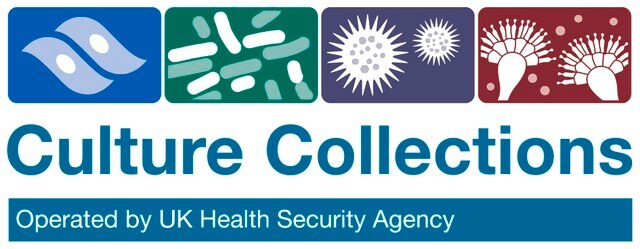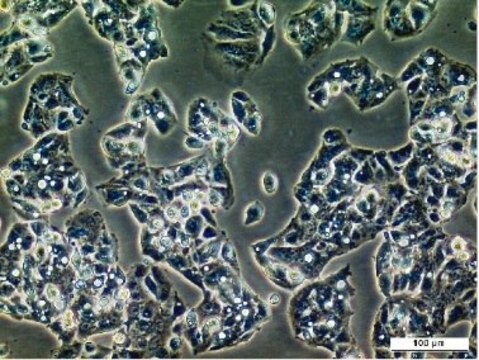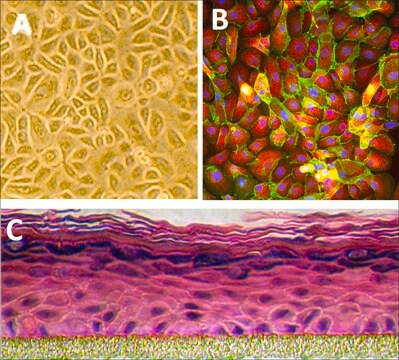推薦產品
生物源
mouse skin
品質等級
增長模式
Adherent
染色體組型
See Segrelles et al 2011
形態學
Epithelial
產品
See Segrelles et al 2011
受體
Not specified
技術
cell culture | mammalian: suitable
運輸包裝
dry ice
儲存溫度
−196°C
細胞系來源
Mouse epidermal keratinocyes, differentiation
細胞系描述
COCA, a murine epidermal cell line was developed by serially passaging keratinocytes from the back skin of adult C57BL/DBA mice. Culture of the COCA cells is in fully defined media without requirement for feeder layer or other coating. COCA retains its ability to differentiate and stratify in response to increased calcium concentrations thus providing an excellent experimental system for in vitro (conventional and 3D epidermal cell cultures) and in vivo (skin regeneration) skin modelling.
應用
For complete product information, please see ECACC
培養基
CnT-07 media This defined medium contains low calcium (0.07mM). To promote good cell attachment post trypsinisation, an 8-14 hours incubation in CnT-07 medium containing 0.2mM CaCl2 is necessary. Differentiation can be initiated by transferring a confluent monolayer from 0.07mM calcium to high calcium (1.2mM).
例行更新培養
Split sub-confluent cultures (70-80%) 1:3 to 1:6 i.e. seeding at 0.5-1.5 x 104 cells/cm2 using 0.25% trypsin or trypsin/EDTA; 5% CO2; 37°C. It is important to inactivate the trypsin with an equal volume of trypsin inhibitor. To remov
其他說明
Additional freight & handling charges may be applicable for Asia-Pacific shipments. Please check with your local Customer Service representative for more information.
Cultures from HPA Culture Collections, supplied by us, are for research purposes only. Enquiries regarding the commercial use of a cell line are referred to the depositor of the cell line. Some cell lines have additional special release conditions such as the requirement for a material transfer agreement to be completed by the potential recipient prior to the supply of the cell line. Please view the Terms & Conditions of Supply for more information.
儲存類別代碼
10 - Combustible liquids
水污染物質分類(WGK)
WGK 3
Carmen Segrelles et al.
BMC dermatology, 11, 9-9 (2011-04-23)
Skin diseases are a major health problem. Some of the most severe conditions involve genetic disorders, including cancer. Several of these human diseases have been modelled in genetically modified mice, thus becoming a highly valuable preclinical tool for the treatment
我們的科學家團隊在所有研究領域都有豐富的經驗,包括生命科學、材料科學、化學合成、色譜、分析等.
聯絡技術服務


